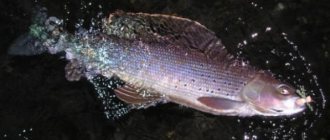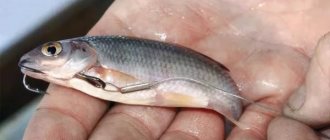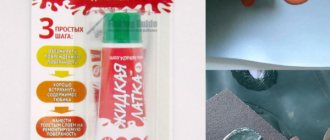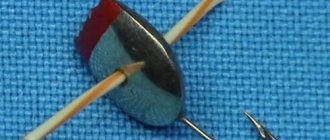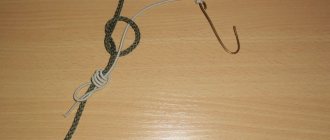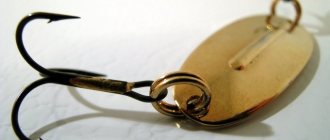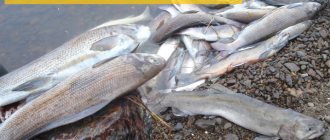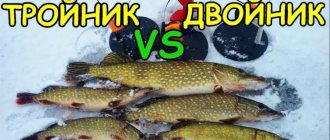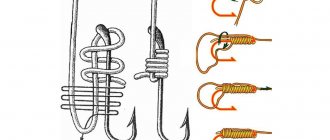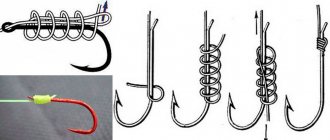Step two. Manufacturing
Step one. Materials
To make a “Young Pioneer” fly we will need: a car or railway worker, a traffic police officer, a Young Pioneer and a chicken.
First of all, you need to make an acquaintance with some traveler. His orange vest, which is called “jaundice” in local slang, has a special piece inside for flywraps. It will be useful for making an asshole (imitation of an ovipositor).
For the head, you need to agree with the traffic police officer about a piece of his lemon-lime signal vest, called “greenback”. If you conduct a conversation correctly when stopping a vehicle, then a piece of the vest is yours.
The body is made from the St. George ribbon, which young pioneer women usually distribute free of charge to everyone on Victory Day on May 9. It happens that they even forcefully impose it together with traffic police officers, stopping passing cars, so here you can kill two birds with one stone.
The requirements for feathers, like everything else, are low. Any red hen or rooster will do.
That's all the materials needed to make the front sight.
Step two. Manufacturing
Let's get started. We fasten the mounting thread, the track for making the butt.
We're not making a very big mess.
We attach two St. George ribbons of the young pioneer to the sides of the body, orange on one side and black on the other.
We remove the excess. We form the base of the body of the fly and cut the mounting thread.
Next you need to weave the body of the fly.
To begin with, we make a regular knot from the two ends of the ribbon, tightening it in front of the butt.
We knit the next knot. The color that comes from the bottom of the knot goes on top of the hook.
The whole body is knitted in a similar manner, alternating colors.
Having secured the body with the traffic police “greenback”, we come to the pen.
We tie the feathers with the tips outward and cut off the tails.
Then we bring the tips back, secure the head and the “Young Pioneer” fly is ready.
Step three. Trial
We go fishing, set a fly, catch a lot of grayling and treat everyone.
- medical clamp,
- scalpel or knife,
- scissors,
- Super glue
To tie this simple fly, it is not necessary to have a fly fishing laboratory with all the attributes. Many fishermen still tie flies on their knees. Some tools will be desirable. Let's get started.
- medical clamp,
- scalpel or knife,
- scissors,
- Super glue
The clamp must have spherical recesses into which the solder is placed.
Consumables are also simple:
- threads,
- lurex blue,
- red organza for plumage,
- orange thread for the head.
Hooks with soldering are used ready-made, in a variety of numbers. We clamp the solder, apply glue and form the body of the fly. We secure the last skein of thread with glue and let it dry.
We remove the remaining “tails” of threads with a scalpel. We clamp the front sight solder again, apply a drop of glue and go over the entire body with colored lurex. We make several turns at the bend of the hook and fix the Lurex with a drop of glue. After the glue has dried, remove the remaining lurex.
Let's cut off a little organza, apply a drop of glue near the solder and make a couple of turns. Let's also add glue and secure the head of the fly with a bright orange thread.
After the glue has dried, remove the excess threads. We cut off both “tails” of the organza with scissors along the bend of the hook. We straighten the organza - these are the wings of our fly.
The fly is almost ready. One wing was a little stuck together and had some glue at its base. This can be easily removed with a needle. The wings must be symmetrical.
Such flies are tied with a special knot. From the bend side of the hook, insert the fishing line into the hole. At the end of the fishing line we knit a blind double knot-stopper, remove the excess fishing line. These flies have proven themselves excellent in Siberia, Transbaikalia and the Far East. They are popular on the Kola Peninsula. Naturally, the catches are dominated by grayling, lenok, trout, all types of salmon and whitefish. They also fish for carp fish - roach, dace, bream, ide, etc.
In winter, one tipped fly tied above a homemade spinner or balancer brings success. As a top fly it attracts bream and roach. As a rule, without adding maggots or bloodworms.
Nazarov Ivan - Specially for the site Homemade products for fishing, Russia, Krasnoyarsk
- The consolidated end of the fishing line is passed through the fastening ring twice (without tightening).
- The free section wraps the main line 5-6 times in the direction from the hook.
- The free segment is threaded into the formed ring between two turns of fishing line at the first stage.
- The main cord is pulled with force.
- Excess pieces of fishing line are removed.
Common Mistakes
Most often, newbie fishermen make the following mistakes:
- They do not follow the steps from the instructions; as a result, the knot formed is not strong.
- The knot does not tighten well in the final stages.
- The remaining excess pieces of fishing line are not cut off.
Tips for the fisherman: Forecast for the grayling bite in Krasnoyarsk at 5 - Tips for a beginner
All of the listed mistakes can aggravate the fishing process. A fishing line sticking out in different directions will only push the fish away from your bait, and an incorrectly made knot will lead to the bait breaking and losing.
To begin with, we make a regular knot from the two ends of the ribbon, tightening it in front of the butt.
Step one. Materials
To make a “Young Pioneer” fly we will need: a car or railway worker, a traffic police officer, a Young Pioneer and a chicken.
First of all, you need to make an acquaintance with some traveler. His orange vest, which is called “jaundice” in local slang, has a special piece inside for flywraps. It will be useful for making an asshole (imitation of an ovipositor).
For the head, you need to agree with the traffic police officer about a piece of his lemon-lime signal vest, called “greenback”. If you conduct a conversation correctly when stopping a vehicle, then a piece of the vest is yours.
The body is made from the St. George ribbon, which young pioneer women usually distribute free of charge to everyone on Victory Day on May 9. It happens that they even forcefully impose it together with traffic police officers, stopping passing cars, so here you can kill two birds with one stone.
The requirements for feathers, like everything else, are low. Any red hen or rooster will do.
That's all the materials needed to make the front sight.
Step two. Manufacturing
Let's get started. We fasten the mounting thread, the track for making the butt.
We're not making a very big mess.
We attach two St. George ribbons of the young pioneer to the sides of the body, orange on one side and black on the other.
We remove the excess. We form the base of the body of the fly and cut the mounting thread.
Next you need to weave the body of the fly.
To begin with, we make a regular knot from the two ends of the ribbon, tightening it in front of the butt.
We knit the next knot. The color that comes from the bottom of the knot goes on top of the hook.
The whole body is knitted in a similar manner, alternating colors.
Having secured the body with the traffic police “greenback”, we come to the pen.
We tie the feathers with the tips outward and cut off the tails.
Then we bring the tips back, secure the head and the “Young Pioneer” fly is ready.
Step three. Trial
We go fishing, set a fly, catch a lot of grayling and treat everyone.
For hunting, two types of bait are usually used:
Elements of fishing gear depending on the fishing method
- The rod should be very durable and fairly light. It is desirable that it be made of carbon fiber. The length is selected depending on the fishing location and the casting distance of the bait. It is quite difficult to work with long fishing rods in fast-flowing areas of the river.
- The reel must be reliable and durable; most often an inertial reel is used, the movement of which is very light and silent. This reel allows the float to float in the direction of the current.
- The fishing line most often used is transparent monofilament, with a diameter of up to 0.3 mm. Such a working thread will be invisible in the water. It is not recommended to use a fishing line with a smaller diameter, since grayling can be quite large and easily break the thread.
- The leash is usually used with a thickness of up to 0.2 mm. Its length ranges from 15 to 25 cm. You can tie several leashes with hooks to the main thread. This makes it possible to catch several individuals at once.
- The float should be small so that it does not scare the grayling under water.
For this you will also need the following tools and accessories:
Fly in spinning and fly fishing
Features of grayling fishing in August in Siberia
Spinning fishermen equip their fishing gear as follows:
- The main fishing line is taken, which is wound on a reel.
- A Tyrolean stick is tied to it. The Tyrolean stick is a specially shaped weight. It is attached both directly to the main thread and through a winding ring. The second fastening option is more durable, since it practically prevents abrasion of the nodal part on the rocky bottom of the reservoir.
- At a distance of 10-15 cm from the load, make a lead leash, 10 cm long.
- A fly is attached to the end of the leash.
Fishing equipment with Tyrolean stick and fly
In fly fishing, the bait in question is tied directly to the main line. There are a lot of ways to do this. Let's talk about some of them.
Dry flies for fly fishing
With these flies it is possible to catch grayling at any time, from spring to late autumn. As a rule, fish constantly feed on insects that somehow ended up in the water.
- The Superpupa dry fly, made on hook No. 16-No. 12, performed well. It is additionally treated with lubricant, which makes it especially buoyant.
- In autumn, grayling takes well with a CdC-Dun fly mounted on a hook No. 18-16 using duck tail feathers.
- In caddis-dominated rivers, a Buck Caddis dry fly can be used.
- Various mayflies are imitated by a Parachute Adamc dry fly tied on a #16 hook.
I took out a bunch of old floss and wound some kind of insect with red thread, pulled out a feather from the pillow (it turned out to be brown) and made something like legs. My wife laughed at my craft
